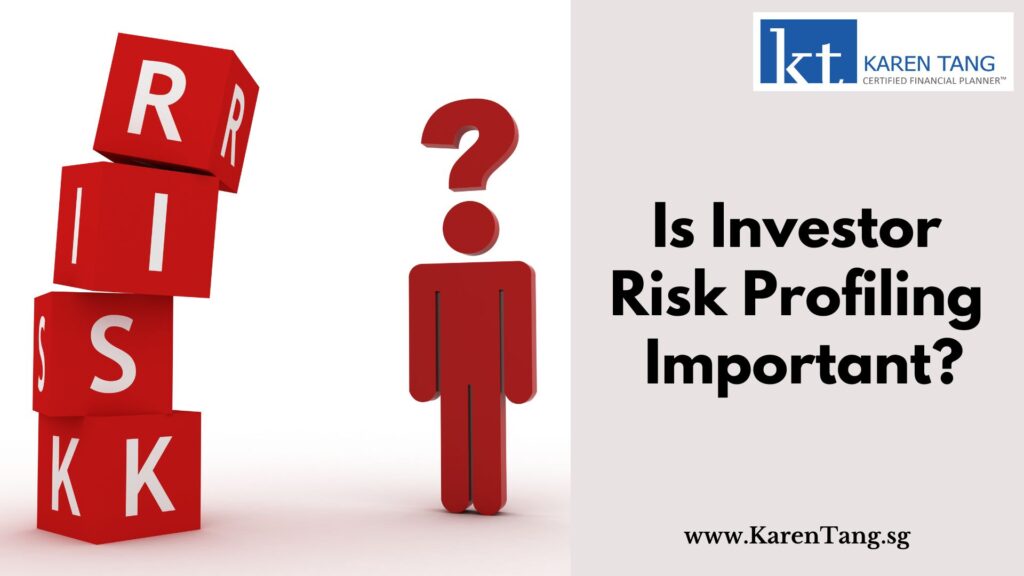Is Investor Risk Profiling Important?

What is investor risk profiling?
It is the process of figuring out what is the tolerance or appetite for risk that an investor has, in a reliable & quantifiable manner, so that important financial portfolio decisions can be made based on it. Simply put, it is a measure of the degree of loss an investor is willing to endure within his or her portfolio.
Market swings, economic or political events, and regulatory, or interest rate changes can affect an investor’s tolerance for risk. Therefore, risk profiling is very important. It is one of the first steps of investment planning.
Before we start, let’s revisit the concept of risk:
In financial markets, risk is not just the irrecoverable loss of the investment amount due to the asset (such as shares or bonds or funds) failing permanently. In fact, risk is more typically referred to as the short- and medium-term volatility i.e. constant changes in price the market offers of the asset every day, regardless of the asset’s fundamentals.
The investor risk tolerance questionnaire usually consists of 5 to 10 questions, each with 3 to 5 choices of answers.
The answers carry points which when totalled up, gives us financial planners and the investors a quantifiable idea of where they stand on the spectrum of their risk tolerance i.e. acceptance or appetite.
This is to be compared to their need for growth in order to meet their retirement and other goals. “Need” is distinct from wishes, desires, likings, or preferences.
The main components of financial risk profiling are:
(a) How much downside (loss in market price) can the investor accept in any given year for the portfolio
(b) How much loss would they be OK with on any given investment. This determines how how concentrated they would like their portfolio to be i.e. conviction bets / plays.
(c) Finally and most crucially, what is their time horizon i.e. holding period. This is the foreseeable number of years when the client can confidently predict that they will not need to suddenly liquidate their holdings (almost in desperation) for any price the market offers at that time, and can instead wait for the best or optimal price for the asset before selling.
Planning your portfolio
Knowing your risk tolerance level helps you plan your entire portfolio and this in turn will drive how you invest.
The answers to the above tell us the asset class split that we would recommend our investors to buy: equities i.e. common stock of companies (which tend to produce greater growth but also come with greater price volatility) versus bonds i.e. fixed income (more slow and steady, safer). For example, if an individual’s risk tolerance is low, investments will be made conservatively and will include more low-risk investments and less high-risk investments.
For a long-term investor who is fine with buy-and-hold for 10 years and more, a greater of representation of equities is often a good idea.
In summary
If you plan to invest, make sure your financial planner goes through a risk tolerance questionnaire with you first. Never skip this step!
Every investor handles risk differently. Some investors take more risk compared to others based on their comfort level. Risk tolerance is directly related to how comfortable an investor can take risks easily.
If you are a first time investor, you may start with a balanced portfolio and that is absolutely fine. When you’ve gained more confidence and experience in investing, you can then progress to take on a little more risk. Meanwhile, continue to equip yourself with (the right) investment knowledge.
If you wish to start on your investment journey and don’t know how, I’m here to guide you! And for you ladies out there … do not be intimidated by investing! On the contrary, it is essential for you to understand it well as part of your financial planning. Start and stay on the right footing. Learn continuously. And more importantly, work closely with your trusted financial advisor who will help to plan, review and monitor your investments.
Investor Risk Profiler – Online Assessment Tool
Question
Your answer:
Correct answer:
Enter Your Email to Get Your Results
In order to comply with privacy regulations in the European Union we'll need you to provide consent before confirming you to our email list:
In order to comply with Personal Data Protection Act (PDPA) regulations in Singapore, we will need you to provide consent before confirming you to our email list.
Your Answers
CATEGORIES
KAREN'S LATEST BLOGS
Latest Blog Posts

How Securing Your Personal Risk Management Is Similar to Having CPR Skills
Let’s Talk About Your Money Mindset – It Matters More Than You Think!

Let’s Talk About Your Money Mindset – It Matters More Than You Think!
Let’s Talk About Your Money Mindset – It Matters More Than You Think!

Karen Tang, CFP® Comments On: Singapore’s Median Household Income Up 2.8% in Real Terms in 2023
On 7 February 2024, Business Times published a news article titled “Singapore’s median household income up 2.8% In real terms in 2023”. This is good

2 Responses
I really appreciate this post. I?ve been looking everywhere for this! Thank goodness I found it on Bing. You’ve made my day! Thank you again
I’d like to thank you for the efforts you’ve put in penning this blog. I’m hoping to see the same high-grade content by you in the future as well. In fact, your creative writing abilities has encouraged me to get my own, personal blog now 😉